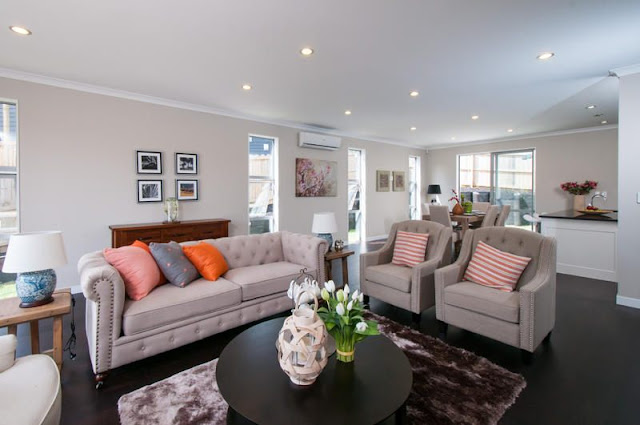Bamboo is a natural surface covering material which has many properties of hardwood flooring. Even thou bamboo is a type of grass; it stands out as a hard product to be used in place of wood. Bamboo flooring shares many advantages of hardwood floor, as well as vulnerabilities and drawbacks. The more information you know about the properties of this material, the better you will be when purchasing a new floor or a maintenance decision.

The Benefits of Having Bamboo Flooring
Ecological Friendly - Bamboo is made from natural vegetation which is a highly renewable resource that can grow to maturity in less than three to five years. This is faster than hardwood trees which take up to two decades to reach full maturity.
Easy Maintenance - Bamboo floor is relatively easy to maintain. When cleaning, all you need to do is sweep or vacuum it regularly to remove all small particle debris. You can damp mop it or clean it using non-alkaline or no wax cleanser.

Water Resistant - The material is more resistant to water stains, damage, and warping than compared to other hardwood materials.
Price - The price of a bamboo floor is priced at the same level of hardwood floors. The price range of bamboo range from $2 to $8 per square foot. Always avoid bargain basement materials as they offer lower quality castoffs.

Durability - Certain types of bamboo are sturdy, strong and durable. Natural, un-carbonized bamboo that is appropriately harvested and manufactured can be as sustainable as red oak. Strand woven bamboo can be made harder than that.
Style - Bamboo is a high classic flooring material that can elevate the elegance of a space almost instantly. The bamboo has a feel and appearance similar to that of hardwood. This class can add an ineffable quality to your room.
The Drawbacks of Bamboo Flooring
Emission of VOC’s - Bamboo floor planks is manufactured by slicing and shredding the stalk of bamboo grass plant and then adding the pieces back together using pressure, heat, and resin based adhesives. These adhesives can later release volatile organic chemicals into the air of an interior space over time.
Scratches - Even with its easy maintenance, it is nearly impossible to keep the bamboo floor perfectly if regularly used. There different things that can cause nasty scratches on the surface of a bamboo floor. Pet claws, high heels, and furniture legs can cause damage on the surface.
Water Damage - As mentioned earlier, bamboo is more resistant to water damage than any other wood. However, it being a natural material, if its organic moisture absorbs excessive moisture it will cause it to wrap or allow mold to grow.
Humidity - If the floor is installed in a very humid area, the air can cause the floor planks to plump. When exposed to a dry environment, the planks can shrink. In both, cracks in the bamboo will be the results.
Make a superb floor by using Bamboo Flooring NZ in your home and rental apartments.
Source: Click here

The Benefits of Having Bamboo Flooring
Ecological Friendly - Bamboo is made from natural vegetation which is a highly renewable resource that can grow to maturity in less than three to five years. This is faster than hardwood trees which take up to two decades to reach full maturity.
Easy Maintenance - Bamboo floor is relatively easy to maintain. When cleaning, all you need to do is sweep or vacuum it regularly to remove all small particle debris. You can damp mop it or clean it using non-alkaline or no wax cleanser.

Water Resistant - The material is more resistant to water stains, damage, and warping than compared to other hardwood materials.
Price - The price of a bamboo floor is priced at the same level of hardwood floors. The price range of bamboo range from $2 to $8 per square foot. Always avoid bargain basement materials as they offer lower quality castoffs.

Durability - Certain types of bamboo are sturdy, strong and durable. Natural, un-carbonized bamboo that is appropriately harvested and manufactured can be as sustainable as red oak. Strand woven bamboo can be made harder than that.
Style - Bamboo is a high classic flooring material that can elevate the elegance of a space almost instantly. The bamboo has a feel and appearance similar to that of hardwood. This class can add an ineffable quality to your room.
The Drawbacks of Bamboo Flooring
Emission of VOC’s - Bamboo floor planks is manufactured by slicing and shredding the stalk of bamboo grass plant and then adding the pieces back together using pressure, heat, and resin based adhesives. These adhesives can later release volatile organic chemicals into the air of an interior space over time.
Scratches - Even with its easy maintenance, it is nearly impossible to keep the bamboo floor perfectly if regularly used. There different things that can cause nasty scratches on the surface of a bamboo floor. Pet claws, high heels, and furniture legs can cause damage on the surface.
Water Damage - As mentioned earlier, bamboo is more resistant to water damage than any other wood. However, it being a natural material, if its organic moisture absorbs excessive moisture it will cause it to wrap or allow mold to grow.
Humidity - If the floor is installed in a very humid area, the air can cause the floor planks to plump. When exposed to a dry environment, the planks can shrink. In both, cracks in the bamboo will be the results.
Make a superb floor by using Bamboo Flooring NZ in your home and rental apartments.
Source: Click here















